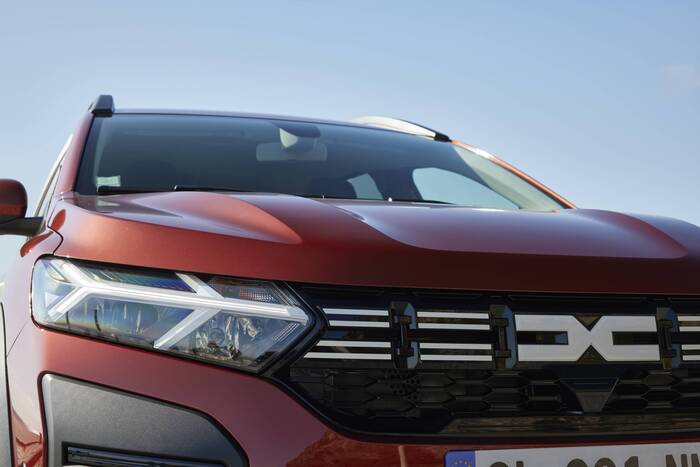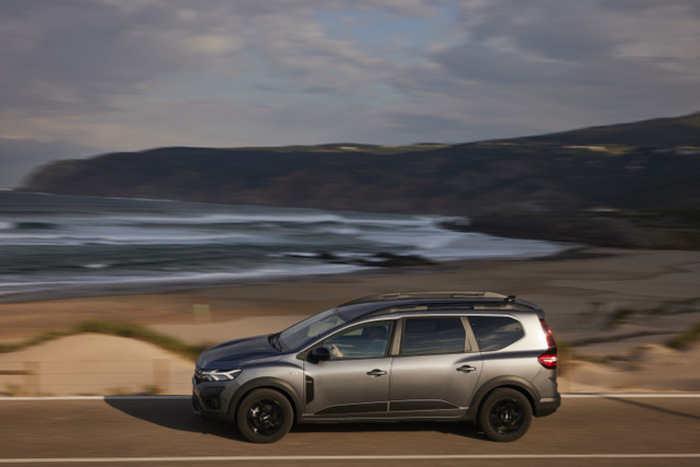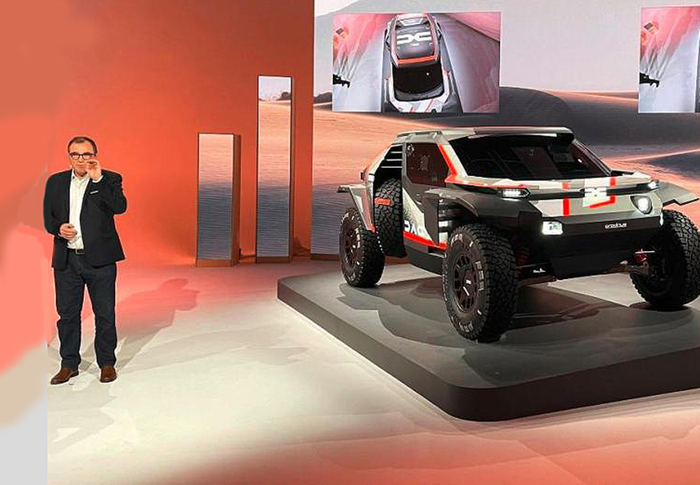Enlarge image
Photo: Dacia
The first impression:
The Dacia Jogger is a car like an Ikea shelf - lots of storage space, sober charm.
That's what the manufacturer says:
Driving is apparently only fun in an SUV - they even seem to have come to this conviction at Dacia.
“We are reacting to the ongoing SUV trend and have therefore drawn the jogger with the bonds of an off-road vehicle,” says Dacia strategist Christophe Lavauzelle.
Basically, the new model even includes three types of cars in one.
"In addition to the SUV design, there are the dimensions of a compact station wagon and the variability of a van." And because the Dacia is once again cheaper than all the others in this segment, it should quickly become a favorite of many families.
But it is also becoming more difficult for the Romanian Renault subsidiary to keep the low price.
Authorities are tightening the requirements, customer demands are growing.
Dacia can therefore no longer simply apply the discarded technology of the parent company.
"We use the most modern platform that the group has to offer for the jogger," says Lavauzelle.
The fact that the Dacia still costs barely half as much as some of its competitors is due to the design, which is designed to keep costs as low as possible.
This starts with the integration of the navigation system, continues with the installation of the door panels and extends to the position of individual switches, which keeps cable routes short.
In addition, the Jogger is based on a small car architecture, although it is a compact class car.
The platform is therefore up to 300 kilograms lighter than similarly sized competitors, explains Lavauzelle.
That's 300 kilos of steel and glass that Dacia doesn't pay for and the engine doesn't have to move.
So does a weaker drive, which again costs less and consumes less on top of that.
Electrification is currently not planned.
»We will only offer a plug-in drive
when we can no longer avoid it,” says Lavauzelle, refreshingly candid.
No Dacia customer could and would not afford this technology.
That's what struck us:
you can hardly tell that the jogger is a budget car.
The materials are good, the consoles have nice finishes, there is a large touchscreen.
At least in the top version, which is still under 20,000 euros, there are a few chrome frames around the switches.
The austerity course can be felt on the fingers: the plastics are hard and the edges are sometimes sharp.
There are no upholstery mats or flock velor.
But even VW has now saved on the ID.3, for example.
Nice side effect of the austerity course: There is a lot of space.
The bells and whistles of some competitors take up space.
That goes for the dashboard as well as the seats, which are thinner and slimmer in the Jogger.
The comfort suffers little.
Dacia uses the generous amount of space for the option of a third row of seats.
Even adults can sit reasonably comfortably there.
However, some flexibility is required to fold into the rear.
If there are only five or even two people traveling, the rear seats can be folded down, raised or the seats in the third row can be removed.
However, the luggage volume in the seven-seater is only 160 liters, with a maximum of 1800 liters of storage space possible in the car.
When driving, customers of the jogger have to cut back.
Dacia is all about getting you from A to B, not having fun along the way.
The three-cylinder chattered due to lack of damping louder than in the Renault Clio.
Steering, suspension, damping and brakes do their job well - but not a bit better.
The Jogger feels like a small car in every curve and on every bump.
The skimping is also a little more noticeable in the assistance systems: there are no extras such as distance control or steering intervention in lane guidance.
With other manufacturers, this has long been standard up to the small car class.
You have to know that:
Dacia plans to start delivering the jogger in the spring.
Advantage: Because there is less frills, the jogger needs fewer chips and should therefore be available quickly despite disrupted supply chains.
Prices start at 13,990 euros for the five-seater and 14,790 euros for the seven-seater version.
For now, customers only have two engine variants to choose from.
Both are three-cylinder turbo with a displacement of one liter.
When operated with petrol, it delivers 110 hp and can reach a maximum of 183 km/h.
Those who order the LPG version refuel cheaper, but only have 101 hp and reach a maximum of 175 km/h.
The automatic transmission saves Dacia, as does the all-wheel drive.
But there's for the first time at Dacia a hybrid drive for the jogger, as it is also used in the Clio - but only in about a year.
We will not forget that:
The seriousness with which Dacia made the jogger into a seven-seater.
Although the folding mechanism seems cheap, removing and installing it again is not easy.
But there's a surprising amount of space and even vent windows for the backbenchers.
Thomas Geiger is a freelance author and was supported in his research by Dacia.
Reporting is independent of this.














